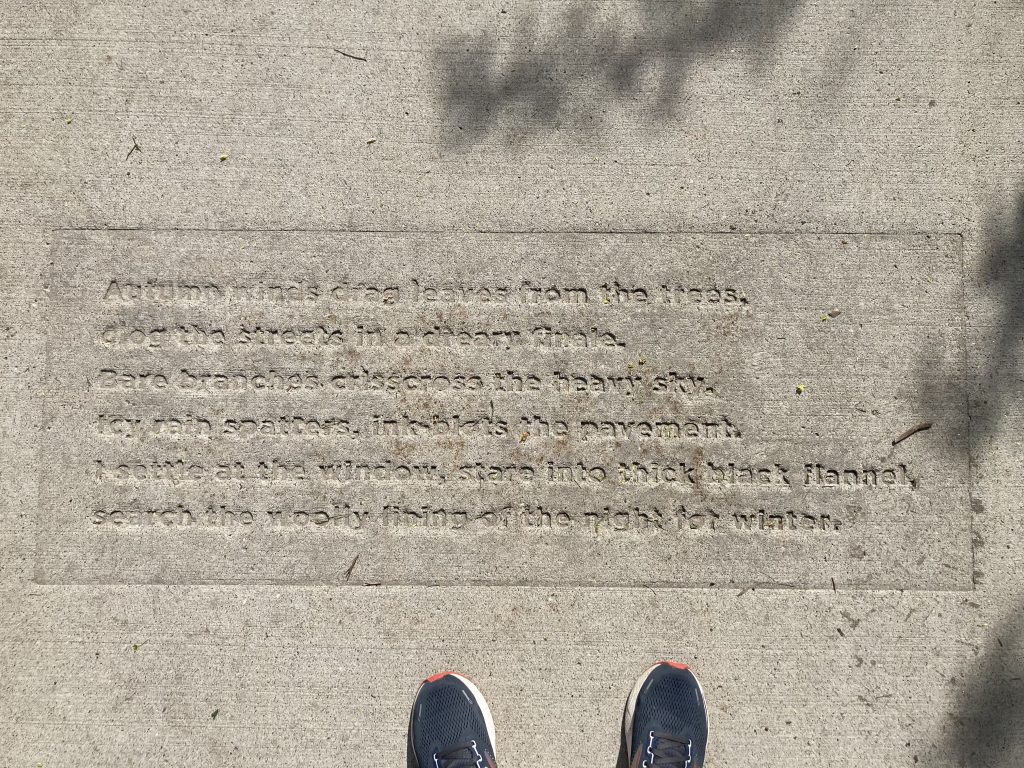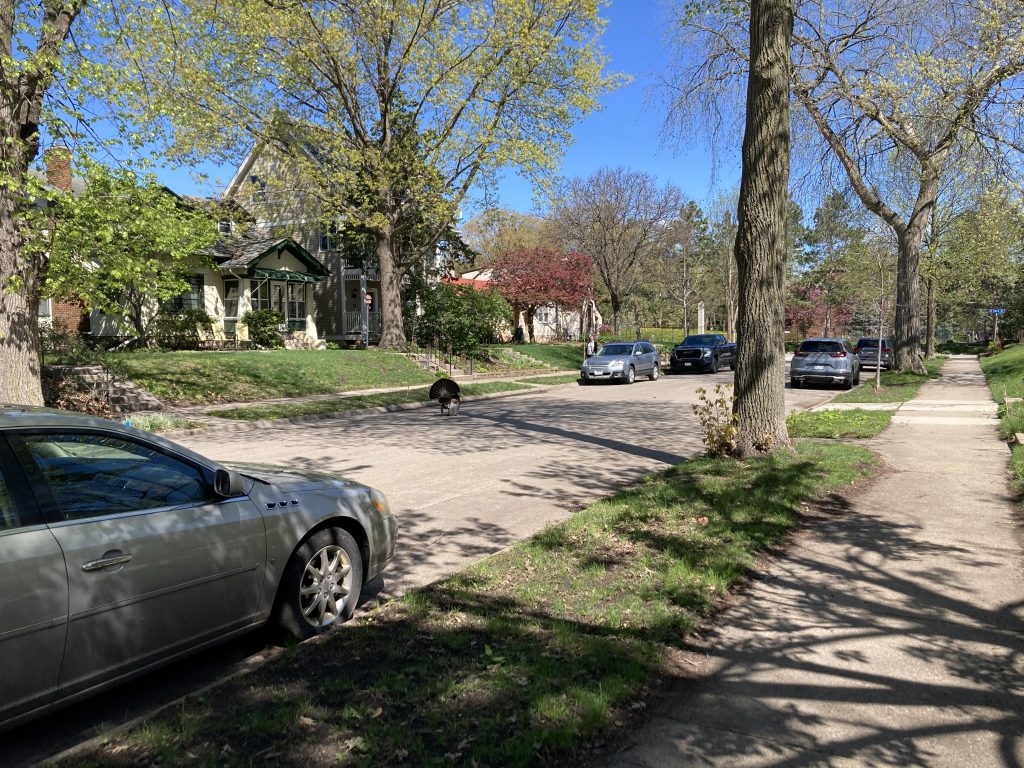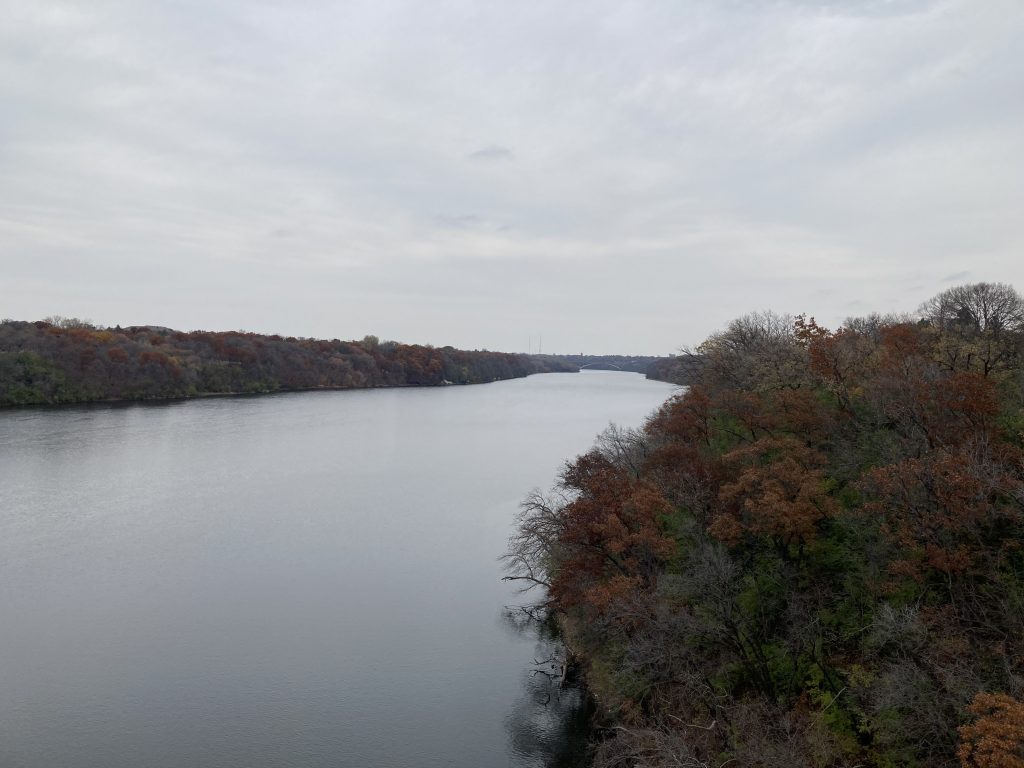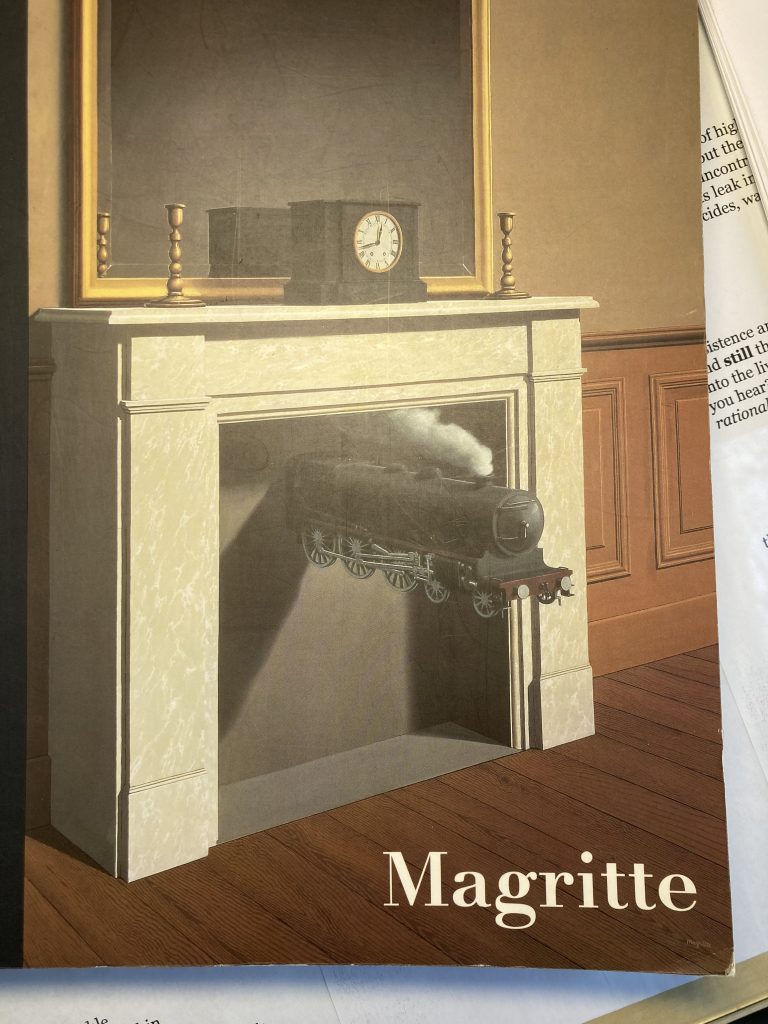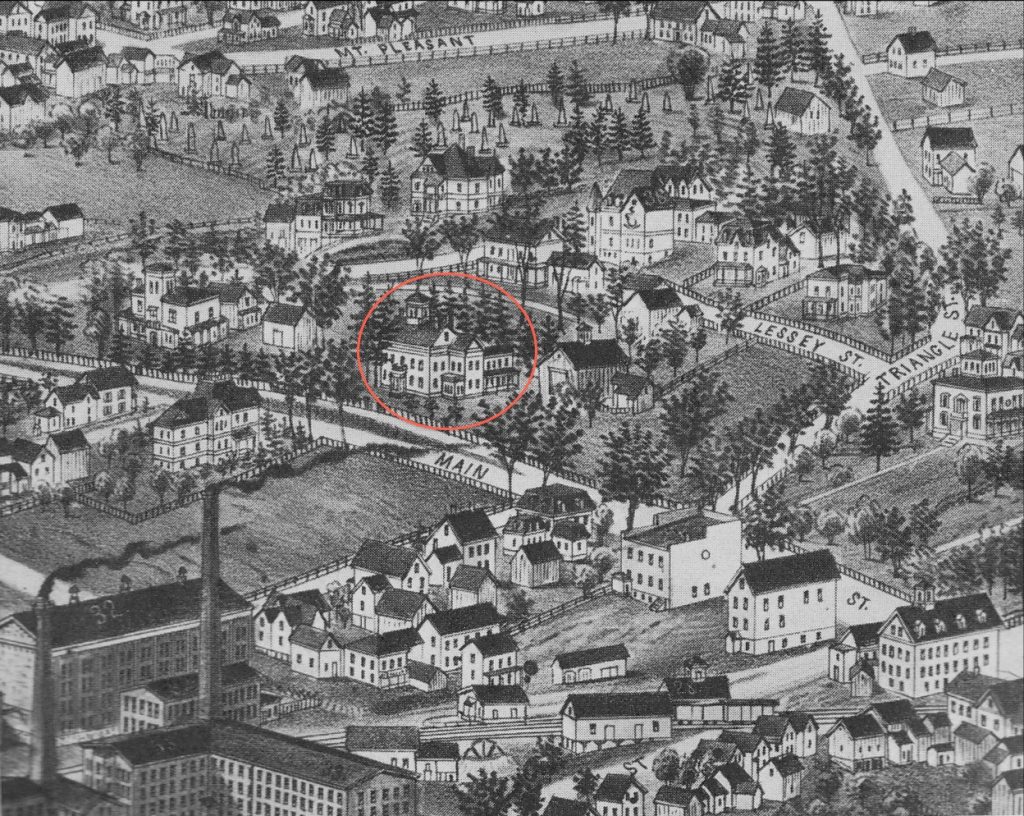5 miles
bottom of franklin hill
65 degrees
Feels like summer is here. Everything green, my view of the river gone. I did see the river for a few minutes, as I ran down to the flats, but I don’t remember what I saw. Wait — yes, I recall seeing the reflections of trees.
Felt good for the first half, not so good the second. Tired legs, some gastro stuff.
added a few hours later, when I remembered: Along the river road, the workers were out patching asphalt and replacing wires in the street lights that were recently disemboweled again. How many times has this happened? Running north, I saw a guy in an orange vest with a big spool of coated wire, rolling out a lot of it on the bike path. Later, returning south, I saw another worker sitting at the base of a street lamp, fiddling with the wire. It looked like a time-consuming job. I read somewhere that all this stolen wire has cost St. Paul millions of dollars this year. I also read — maybe in the same article? — that the coated wire was stamped with “City of St. Paul” on it and that that stamped wire had been recovered at at least one scrap metal company that frequently bought stolen wire. Is Minneapolis wire stamped too?
I think I partly remembered witnessing the street lamps and the wire because of reading today’s episode of the Slowdown. Major Jackson picked a poem by Liesel Mueller that I gathered a few years ago for my list of vision poems: Monet Refuses the Operation. When I first encountered it, I didn’t really get it. Then, a few months ago (18 feb 2024), I read it again and it suddenly made so much sense. Yes, I thought, she gets it. She starts the poem with an image of streetlights:
Doctor, you say there are no haloes
around the streetlights in Paris
and what I see is an aberration
caused by old age, an affliction.
I tell you it has taken me all my life
to arrive at the vision of gas lamps as angels,
to soften and blur and finally banish
the edges you regret I don’t see,
to learn that the line I called the horizon
does not exist and sky and water,
so long apart, are the same state of being.
I don’t think I see halos around street lamps, but the idea of things blurring together, and edges not being visible (or not existing), is very true to my experience. This poem, along with several others I’ve collected, including Ed Bok Lee’s “Halos” offer ways to think about how I see as beautiful and magical, not tragic. Here’s how Major Jackson (love his poetry!) describes this “bad” vision as beautiful:
Poets and visual artists work to give representation to the world which shimmers and blurs. Sometimes only impressions are available. Rather than a fidelity to things as they are, we desire to represent those very distortions. Today’s dramatic monologue is a gem of a poem, one that reminds how everything around us is divined with light, even our imperfections.
Episode 1120
I can’t remember what I listened to for the first half of my run, but after running up most of the hill, I stopped to walk and put in my “Slappin’ Shadows” playlist. My favorite came from, “Dancing in the Moonlight”: you can’t dance and stay uptight
Favorite song: “Evening” — the haunting flute! the melancholy bass clarinet! love it
Evening makes me think of a wonderful poem that I encountered while rereading old entries from on this day.
Evening/ Jeremy Radin
Another word I love is evening
for the balance it implies, balance
being something I struggle with.
I suppose I would like to be more
a planet, turning in & out of light
It comes down again to polarities,
equilibrium. Evening. The moths
take the place of the butterflies,
owls the place of hawks, coyotes
for dogs, stillness for business,
& the great sorrow of brightness
makes way for its own sorrow.
Everything dances with its strict
negation, & I like that. I have no
choice but to like that. Systems
are evening out all around us—
even now, as we kneel before
a new & ruthless circumstance.
Where would I like to be in five
years, someone asks—& what
can I tell them? Surrendering
with grace to the evening, with
as much grace as I can muster
to the circumstance of darkness,
which is only something else
that does not stay.
I think I’d like to memorize this poem, just so I can spend some more time with it, especially out on the trail.
random line encountered again: “squirrels devote much of their life to not-dying.” Today, I’d like to write around and into this stark line.
silhouettes
On Wednesday, I picked up three books related to my shadow month: the kids’ book, The Shades, Diana Khoi Nguyen’s Ghost of, and Kara Walker: My Complement, My Enemy, My Oppressor, My Love. Today, I’m skimming through Nguyen’s and Walker’s books and thinking about silhouettes again.
When I look at Kara Walker’s work, I see adamantly two-dimensional images — images pinned and flattened in a rejection of Renaissance space.
Forward/ Kathy Halbreich
Okay, I would love to be able to read all of this book, but, wow, there is very little contrast and even with my brightest lamp, I’m struggling to read the words. Bummer.
I observe in Walker’s visual liexicon a world I’ve never seen quite so explicitly: a pictorial vision in which everyone is a mere silhouette of self, a profile drained of facture (def: the manner in which — a painting — is made) or flesh, pushed flat and up against the wall.
Forward/ Kathy Halbreich
Halbreich references an interview with Kara Walker in Index, which I can read much more easily than the book:
The silhouette says a lot with very little information, but that’s also what the stereotype does. So I saw the silhouette and the stereotype as linked. Of course, while the stereotype, or the emblem, can communicate with a lot of people, and a lot of people can understand it, the other side of this is that it also reduces difference, reduces diversity to that stereotype. I was kind of working through this in the tableaus and things that I’ve been doing, where the intention was to render everybody black and go from there. Go from this backhanded philosophy that blackness is akin to everything.
Kara Walker
In a quiet voice, she [Walker] might say that her narratives are a radical condensation of a faith in shadows, or “becoming.”
Forward/ Kathy Halbreich
Two silhouettes I recall encountering during my run:
one: Running down into the tunnel of trees, dark and thick with green, I saw a figure ahead moving strangely, something dark trailing around them, almost like flapping wings. Getting closer, I could see it was a dark jacket of sweatshirt tied around their waist. As they swung their arms widely, the sleeves of the jacket were ruffled.
two: Hi Dave! Thinking again about how I (almost) always can identify Dave the Daily Walker because of his distinctive form: one arm that swings out from his side — wide and awkward.
